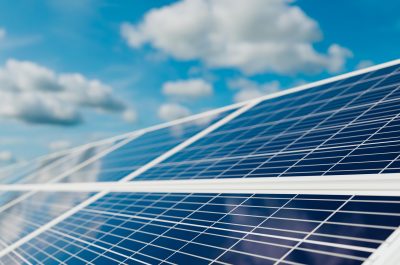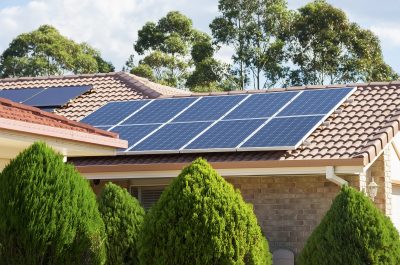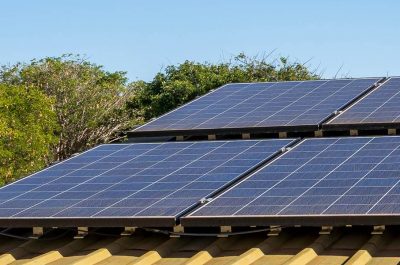Are we there yet?
Unlocking the value of customer generated energy is the new boom for start-ups and traditional energy businesses. Last week PowerLedger, an Australian pioneer in the application of blockchain to the energy sector, announced a major trial with retailer Origin Energy to explore how customers might trade energy directly to and from each other at a local level. Weeks earlier GreenSync’s Decentralised Energy Exchange (deX) platform was launched with energy network partners, supporting a more dynamic electricity market place.
These developments demonstrate how customers are being served by a growing number of market providers and platforms to help realise the value of stored household storage and solar, and the opportunities to trade with other customers, electricity networks and the wholesale market as well.
‘‘Peer-to-peer energy trading presents an opportunity to unlock enormous value for consumers. It disintermediates the energy supply model, putting consumers in direct contact with other consumers,’’ PowerLedger managing director David Martin said. ‘‘Exploring technology options with Origin that could allow consumers to take more control of their energy purchasing options highlights how the needs and expectations of energy users are changing in Australia”. (Sydney Morning Herald)
Unlocked value
While the partnerships between energy start-ups and traditional businesses are a strong signal of the emerging future of the energy system, it also highlights the work required now to design a future energy system. The Electricity Network Transformation Roadmap forecasts up to 10 million households and small customers will have distributed energy resources (DER) like solar, storage, smart homes and electric vehicles by 2050.
This challenge is already evident in some localised regions with many local zone substations expected to experience reverse power flows from 2020 onwards.
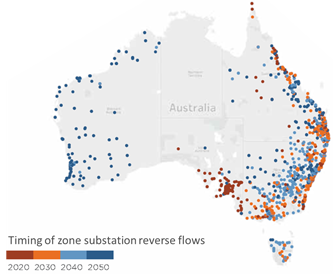
Source: Electricity Network Transformation Roadmap, Final Report.
It is customers who will drive grid edge innovation and seek to maximise the value they can receive from these investments by trading with the system and other customers in greater levels through platforms like PowerLedger and deX.
The rewards of enabling customers to trade through more dynamic electricity markets are significant and can result in greater system efficiencies and reduce systems costs. The Roadmap suggests that networks could buy grid support from customers and their agents, reducing the need to build new network, with this new market expected to be worth up to $1.1 billion per annum within 10 years. Importantly, the orchestration of these new energy assets in the ‘right place at the right time’ could save customers a total of $16 billion in network costs by 2050.
However, unless well managed, the growing penetration of DERs will pose a challenge for both the electricity networks and the wider system which needs to support these dynamic markets, customer choices and continue to deliver stable and reliable electricity.
To address these challenges Energy Networks Australia recently teamed up with the Australian Renewable Energy Agency (ARENA) for the first time through ARENA’s A-Lab to collectively progress priority Roadmap milestones and explore the design of the future electricity system.
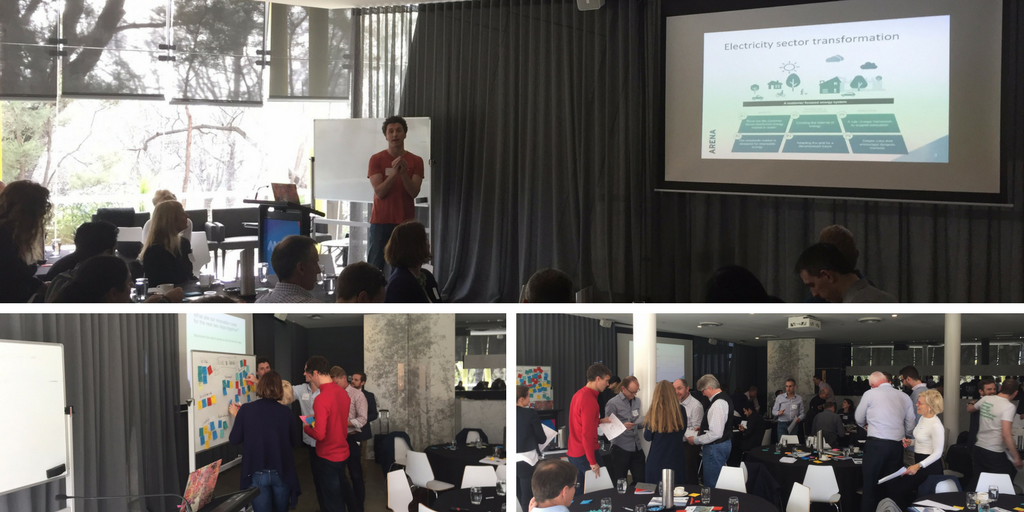
Photo credit: Australian Renewable Energy Agency
The A-Lab brought together a range of stakeholders and participants from across the electricity sector who:
- Explored Distribution System Operator (DSO) design requirements
- Explored what is required for DSO interface and how to best utilise the required data
- Identified how a system with a high penetration of DERs might be operated efficiently for the future we need
- Encouraged industry alignment to accelerate network transformation and consider opportunities to create projects and trials to explore these issues in real world settings
This workshop was informed by the work of Marchment Hill Consulting who have identified that both a management and market platform for DERs is likely to be a key component of the solution to this challenge.
An overview of the future grid edge marketplace
Marchment Hill Consulting identify that, in the future, the value of customers’ DERs is likely to be realised through multiple markets as represented below. Central to this is the Distribution System Operator (DSO) and the Distribution Market Operator (DMO). The DSO is responsible for safe, reliable and efficient operation of a high DER distribution system. The DMO operates and manages the platform to ensure that participants meet registration requirements, information transparency, dispatch reconciliation and market settlement.
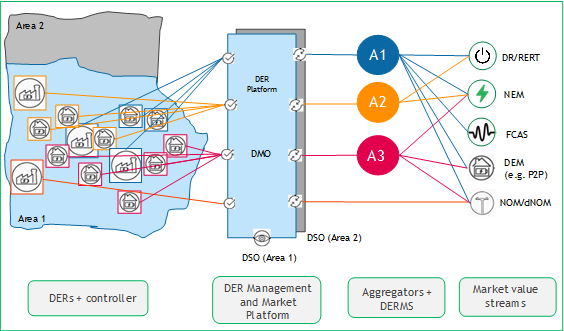
An overview of the future grid edge marketplace. Source: Marchment Hill Consulting.
The different functions and market actors depicted in the diagram include:
- The distributed energy resources (DERs) – such as PV and battery systems and controllable loads purchased by customers and installed behind the meter.
- Controllers – DERs need to be integrated with a controller unit which enables remote control and can optimise the operation of the system in response to remote communication signals. For DERs to be integrated into the DER platform they need to be able to provide defined power products, be visible on the platform, and be remotely scheduled and dispatched.
- Aggregators (A1-A3 above) – organisations (including retailers) who have a contractual relationship with a customer that allows them to interact with the customer’s DER under certain circumstances, in return for financial compensation.
- Distributed Energy Resource Management Systems (DERMS) which orchestrate the activity of the DERs to provide value for customers and the system.
- Market value streams – There are an increasing number of markets that DERs can access via their aggregators. Some may ultimately be accessible without the need for an aggregator (e.g. for very large customers), but in the main we assume the need for some sort of intermediary to provide sufficient scale for economic trading activity. These value streams could include:
- Reliability and Emergency Reserve Trader (RERT) payments.
- The wholesale national electricity market (NEM) which provides a strong price signal to customers based on the supply and demand situation in each jurisdiction.
- The frequency control ancillary services (FCAS) market, which has been recently made accessible to bidding by aggregators.
- The network optimisation market (NOM). Currently this market is in the form of the RIT-T and RIT-D. GreenSync’s non-network solution to a United Energy RIT-D in the Mornington Peninsula is one example. In the future it is envisaged that this market could operate through an increasingly digitised platform to become a digital network optimisation market (dNOM), where a range of network services can be provided by aggregated DERs responding to more granular price signals in near real time.
- Another emerging market is being referred to as the distribution level energy market (DEM) where DERs ultimately trade with other customers via many-to-many or peer-to-peer relationships. Powershop’s “Your Neighbourhood Solar” and PowerLedger’s peer-to-peer trading market are examples of this market.
Future markets will require platforms
Marchment Hill suggests that a future market will need to be supported by a DER management and market platform, specific to a given network area. It can be thought of as having two layers:
- A physical management layer, or DER Management Platform, which provides for registration and visibility of the DERs, details of their characteristics and location and communication link to respond to market signals, and details of the physical constraints of the network. This layer is the domain of the distribution system operator (DSO).
- A commercial trading layer, which contractually connects the DER to a buyer and defines the services agreement and other associated terms and conditions. This layer also reconciles that the DER acted in accordance with its instructions and facilitates market settlement. This layer is the domain of the distribution market operator (DMO).
As the platform is likely to be configured by the DSO for the local network, it is reasonable to assume the most efficient marketplace has one platform for a given geographic region – most likely the region managed by the electricity network. GreenSync’s Decentralised Energy Exchange (deX) is an example of this platform technology.
Where to next?
While the existence of a platform is likely to resolve some issues for the future grid edge marketplace, it also raises more questions about the roles of the DSO and DMO and who is best placed to perform them.
It is clear that there is more to do transition to a future where almost half of our energy supply can be reliably, securely and efficiently provided by the customer. For a start, electricity networks will need to consider and plan how to transition to a role as a distribution system operator, and the role of the distribution market operator needs to be explored in a trial environment to understand its characteristics and the regulations required to provide customer protections and a vibrant grid edge marketplace of the future.
Critically, how these new platforms interface with AEMO and the transmission system needs to be carefully considered as energy trading and flows need to be coordinated between the transmission and distribution systems to ensure system balancing, power quality and to enable market efficiency. The question of how this interface is managed and how visibility of localised DSO level operations flows up to AEMO to balance the needs of the system, all while protecting the privacy of customers, is a key challenge for industry to overcome.
The ARENA process has begun to explore these questions and the immediate priority is to help inform the early grid design and data sharing arrangements that networks need to begin to explore.
The exciting thing about this future is that the technology to enable it is being built today, in Australia, and it is being trialled with Australian customers to deliver real benefits to the system and to customers. Australia is leading the world in progress towards this future and there is significant opportunity in our ability to solve these issues and export the solutions to the world.
